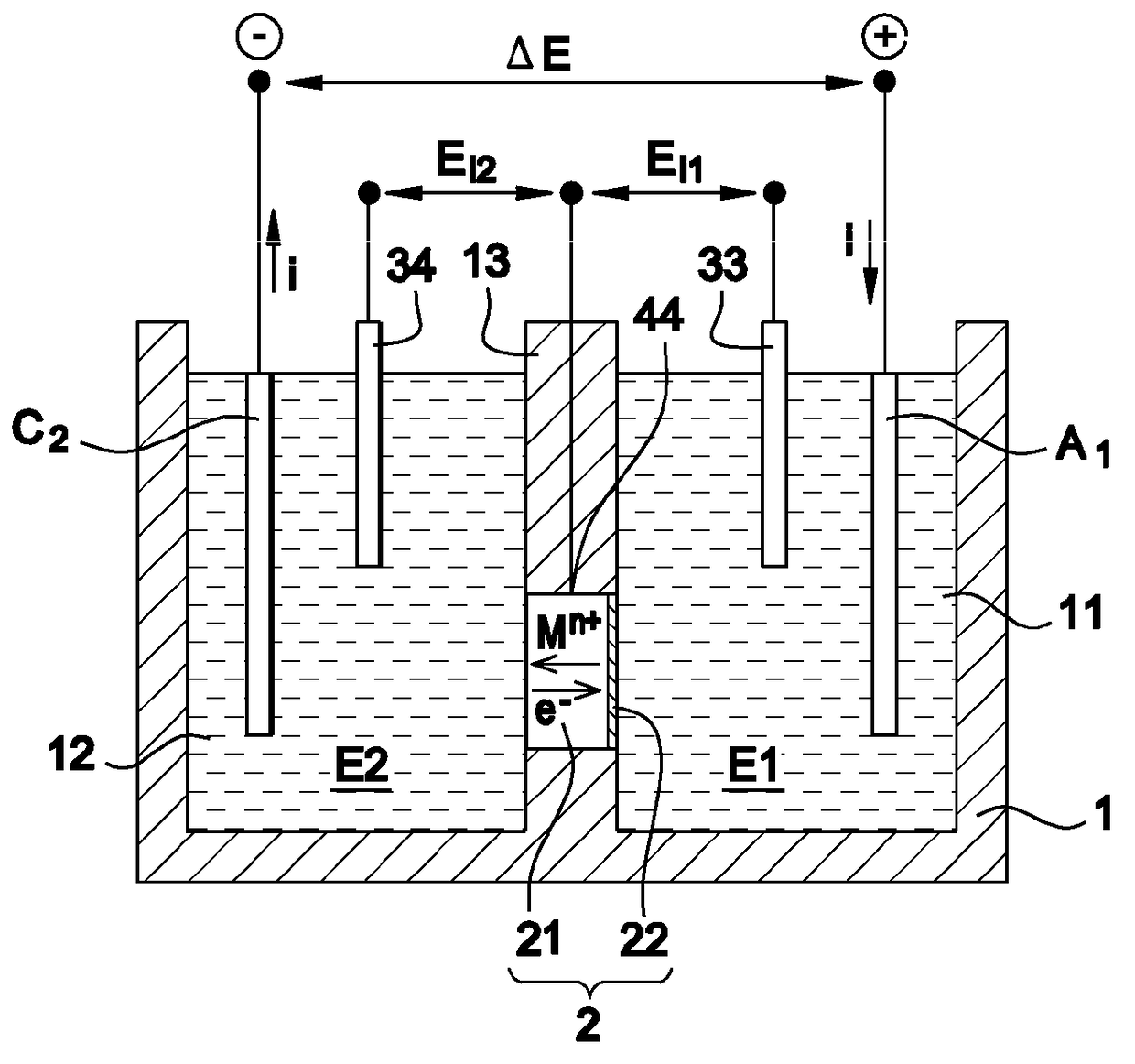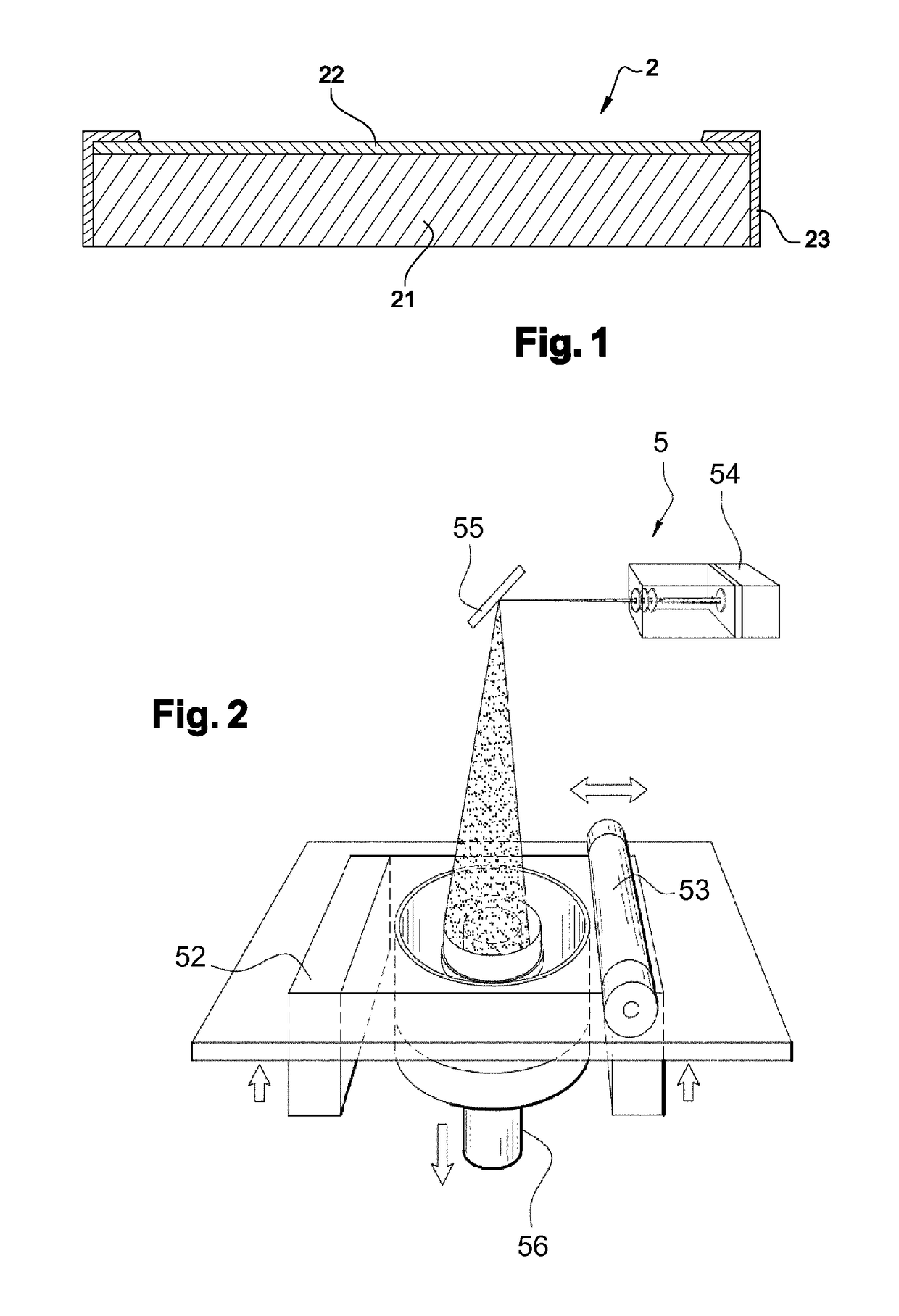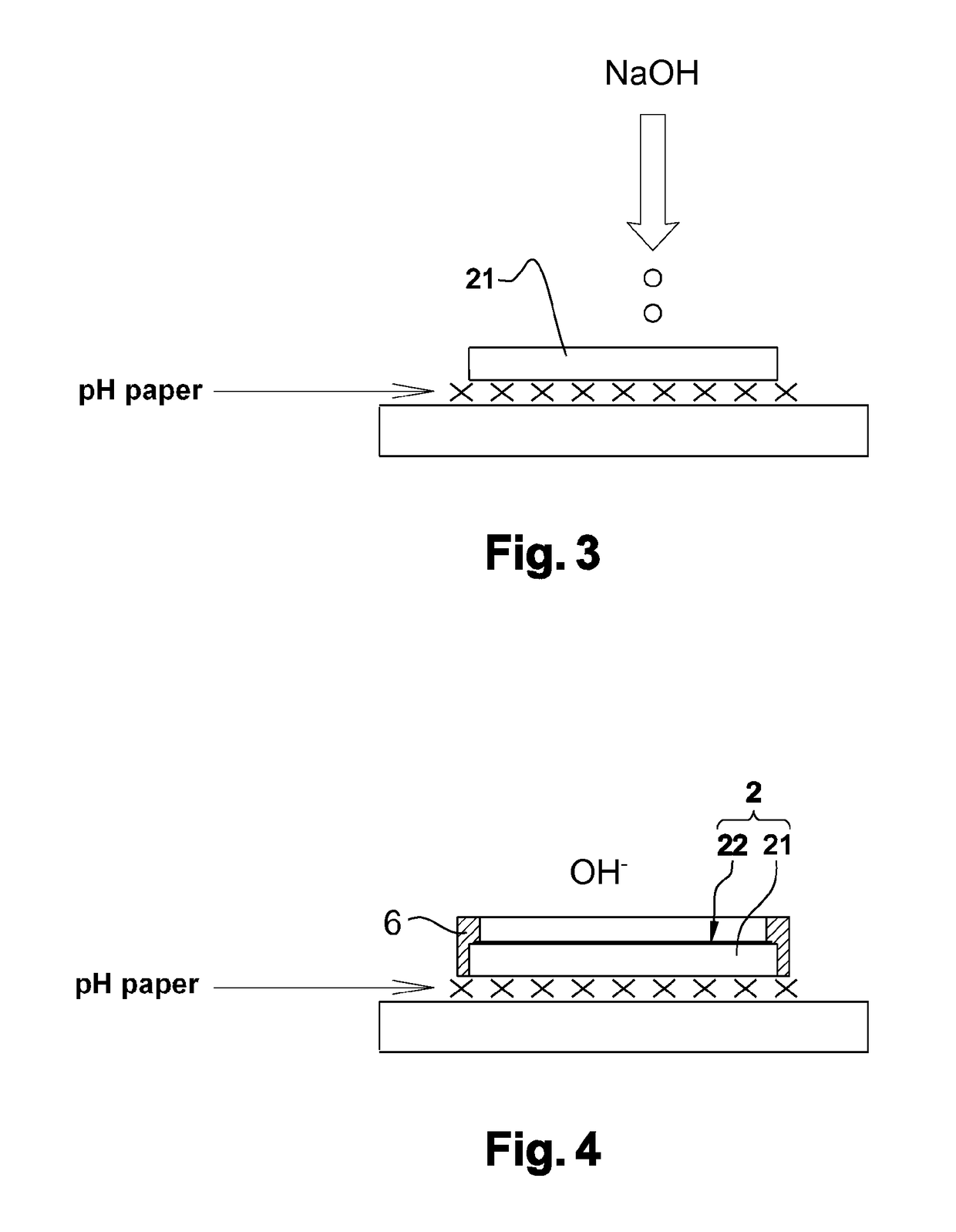Electrolyte-separating membrane for selective transfer of cations through the membrane and process for manufacturing said membrane
a technology of separating membrane and cation, which is applied in the direction of electrochemical methods, separation processes, electrodialysis, etc., can solve the problems of limiting the possibility of industrially utilizing the process, the mechanical strength of the membrane is required, and the thickness reduction is limited
- Summary
- Abstract
- Description
- Claims
- Application Information
AI Technical Summary
Benefits of technology
Problems solved by technology
Method used
Image
Examples
example 1
[0067]The support is made in polyamide 12, in several samples for which the porosity is comprised between 30 and 50% and the thickness is 0.9±0.1 mm. The active layer is based on LiMn2O4 and has a thickness of the order of 80 μm.
[0068]The first electrolyte E1 is a 0.5 mol / L aqueous solution of lithium sulfate, i.e. 7 g / L of lithium and 0.5 mol / L of sodium sulfate, i.e. 11.5 g / L of sodium.
[0069]The second electrolyte is a 0.05 mol / L sodium sulfate solution, i.e. 7.8 g / L of potassium.
[0070]A stable current with an intensity of 110 A / m2 is established. Thus 28 g·h−1·m−2 of lithium are thus selectively transferred from the first to the second electrolyte with a Faradic yield of 94%.
example 2
[0071]The support is made in polyamide 12, in several samples for which the porosity is comprised between 30 and 50%. The active layer is based on Mo6S8 and has a thickness of the order of 80 μm.
[0072]The first electrolyte E1 is a 0.1 mol / L aqueous cobalt sulfate solution at, i.e. 5.9 g / L of cobalt and of 0.1 mol / L nickel sulfate, i.e. 5.8 g / L of nickel.
[0073]The second electrolyte is a 0.05 mol / L aqueous sodium sulfate solution, i.e. 2.3 g / L of sodium.
[0074]A stable current with an intensity of 70 A / m2 is established. Thus 154 g·h−1·m−2 of cobalt are transferred from the first to the second electrolyte with a Faradic yield of 98%. The nickel is not transferred.
example 3
[0075]The support is made in polyamide 12, in several samples, for which the porosity is comprised between 30 and 50%. The active layer is based on Chevrel phases Mo6Se8 and with a thickness of the order of 80 μm.
[0076]The first electrolyte E1 is an aqueous cadmium sulfate solution at 1 mol / L, i.e.
112 g / L of cadmium and of nickel sulfate at 1 mol / L, i.e. 59 g / L of nickel.
[0077]The second electrolyte is a 0.05 mol / L solution of sodium sulfate, i.e. 2.3 g / L of sodium.
[0078]A stable current with an intensity of 70 A / m2 is established. Thus 293 g·h−1·m−2 of cadmium are selectively transferred from the first to the second electrolyte with a Faradic yield of 99%. The nickel is not transferred.
PUM
| Property | Measurement | Unit |
|---|---|---|
| thickness | aaaaa | aaaaa |
| porosity | aaaaa | aaaaa |
| porosity | aaaaa | aaaaa |
Abstract
Description
Claims
Application Information
 Login to View More
Login to View More - R&D
- Intellectual Property
- Life Sciences
- Materials
- Tech Scout
- Unparalleled Data Quality
- Higher Quality Content
- 60% Fewer Hallucinations
Browse by: Latest US Patents, China's latest patents, Technical Efficacy Thesaurus, Application Domain, Technology Topic, Popular Technical Reports.
© 2025 PatSnap. All rights reserved.Legal|Privacy policy|Modern Slavery Act Transparency Statement|Sitemap|About US| Contact US: help@patsnap.com



